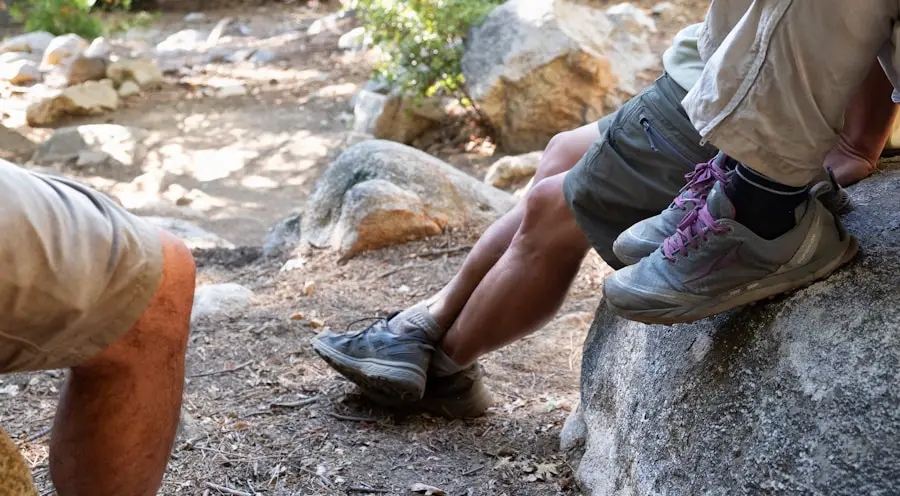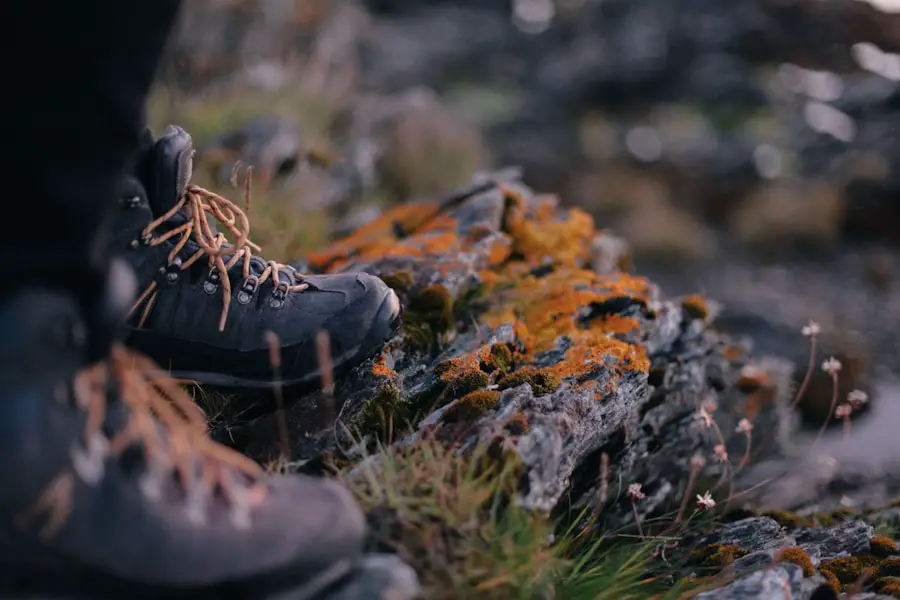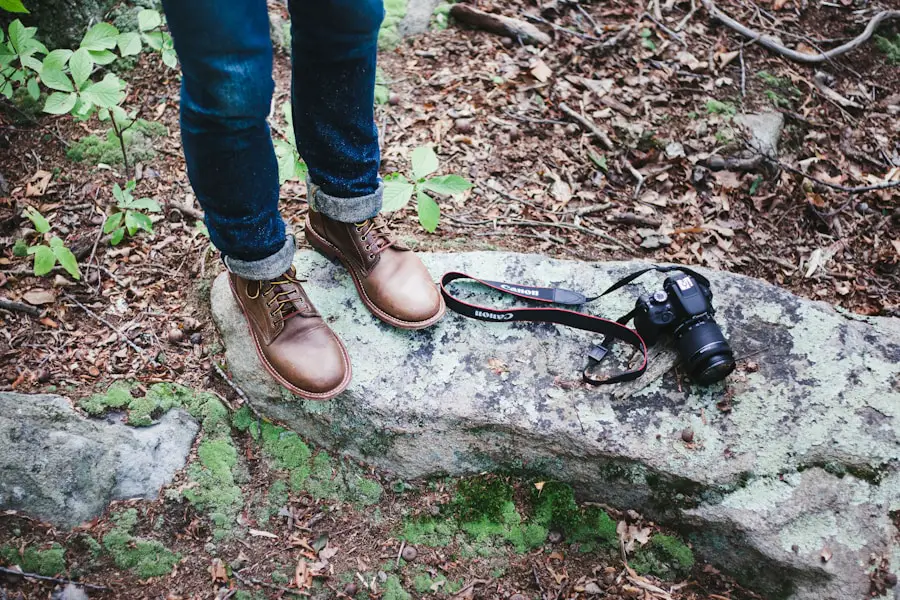Breaking in hiking boots is a crucial step for any outdoor enthusiast, as it directly impacts comfort and performance on the trail. New hiking boots, regardless of their quality or brand, often come with stiff materials that can lead to blisters, discomfort, and even injuries if worn without proper acclimatization. The process of breaking in allows the materials to soften and conform to the unique shape of your feet, ensuring a snug yet comfortable fit.
This is particularly important for long hikes where the risk of foot fatigue and soreness increases significantly. Moreover, breaking in your hiking boots can enhance your overall hiking experience. When boots are properly broken in, they provide better support and stability, which is essential when navigating uneven terrain.
A well-fitted boot can also improve your balance and reduce the likelihood of slips and falls, which are common hazards on hiking trails.
Therefore, investing time in breaking in your boots not only protects your feet but also enhances your confidence as you tackle challenging landscapes.Key Takeaways
- Breaking in hiking boots is important to prevent blisters and discomfort on the trail
- Choosing the right hiking socks can improve comfort and prevent blisters
- Boot stretchers can help customize the fit of hiking boots for added comfort
- Wearing hiking boots around the house can help break them in gradually
- Utilizing moisture and heat can help soften and stretch the leather of hiking boots
Choosing the Right Hiking Socks
The choice of hiking socks is as critical as selecting the right boots. The right socks can significantly influence comfort levels during hikes, as they serve as the first line of defense against blisters and moisture. When selecting hiking socks, consider materials that wick moisture away from the skin, such as merino wool or synthetic blends.
Merino wool is particularly favored for its natural moisture-wicking properties and temperature regulation, keeping feet warm in cold conditions and cool when it’s hot. Additionally, these materials are less prone to odor, making them ideal for multi-day hikes. Another important factor is the thickness of the socks.
Thicker socks provide additional cushioning and warmth but may also lead to a tighter fit within the boot. Conversely, thinner socks can offer a more precise fit but may not provide enough padding for long treks. It’s essential to try on different sock thicknesses with your boots to find the perfect balance between comfort and fit.
Furthermore, consider socks with reinforced areas around the heel and toe for added durability, especially if you plan on tackling rugged trails.
Using Boot Stretchers

Boot stretchers are an effective tool for those who find their new hiking boots a bit too snug. These devices work by gently expanding the material of the boot, allowing for a more comfortable fit without compromising support. Boot stretchers come in various forms, including those designed specifically for width or length adjustments.
For hikers with wider feet or those who experience pinching around the toes, using a width stretcher can alleviate discomfort significantly. To use a boot stretcher effectively, insert it into the boot and adjust it according to your needs. It’s advisable to leave the stretcher in place for several hours or overnight to allow the material to adapt to its new shape.
REI For best results, consider using a stretching spray that softens the leather or synthetic material before applying the stretcher. This combination can expedite the stretching process and ensure that your boots mold comfortably to your feet.
Wearing Them Around the House
| Metrics | Data |
|---|---|
| Percentage of people wearing slippers around the house | 75% |
| Most common type of footwear worn indoors | Slippers |
| Reasons for wearing slippers indoors | Comfort, warmth, and protection |
| Frequency of wearing slippers at home | Every day |
One of the simplest yet most effective methods for breaking in hiking boots is to wear them around the house. This approach allows you to gradually acclimate your feet to the new footwear without subjecting them to the rigors of a long hike right away. Start by wearing your boots for short periods while doing everyday activities like cooking or cleaning.
This not only helps in softening the materials but also allows you to identify any pressure points or areas that may need further adjustment. As you become more comfortable with your boots, gradually increase the duration of wear. Consider wearing them while running errands or during casual outings to simulate real-world conditions.
This practice not only helps in breaking them in but also gives you an opportunity to test different sock combinations to find what works best for you. By the time you hit the trails, your boots will feel like an extension of your feet rather than a foreign object.
Utilizing Moisture and Heat
Moisture and heat can be powerful allies in breaking in hiking boots, particularly those made from leather or other natural materials. The application of heat can help soften stiff areas of the boot, allowing them to mold more easily to your foot shape. One effective method is to wear thick socks and then put on your boots before using a hairdryer on low heat to warm specific areas that feel tight or uncomfortable.
Be cautious not to overheat any one area, as this could damage the material. Moisture can also play a role in this process. Lightly dampening the inside of your boots with water can help relax the fibers, making them more pliable.
After dampening, wear them with thick socks until they dry completely; this will allow them to conform closely to your foot shape as they dry. However, it’s essential to avoid soaking your boots completely, as excessive moisture can lead to damage or mold growth.
Taking Short Hikes

Once you feel that your boots have been adequately broken in through indoor wear and stretching techniques, it’s time to take them out for short hikes. Start with easy trails that don’t require extensive climbing or navigating difficult terrain. This gradual exposure allows you to assess how well your boots perform under actual hiking conditions while still being able to return home if discomfort arises.
During these short hikes, pay attention to how your feet feel within the boots. Are there any areas that rub or pinch? Do you experience any hotspots that could lead to blisters?
Taking note of these sensations will help you make necessary adjustments before embarking on longer treks. Additionally, short hikes provide an excellent opportunity to test out different sock combinations and ensure that you have found the perfect pairing for your boots.
Applying Leather Conditioner
For those who have chosen leather hiking boots, applying a quality leather conditioner is an essential step in both breaking them in and maintaining their longevity. Leather conditioner works by nourishing the material, keeping it supple and preventing it from drying out or cracking over time. A well-conditioned leather boot is not only more comfortable but also more resistant to water and other environmental elements.
To apply leather conditioner effectively, start by cleaning your boots thoroughly to remove dirt and debris. Once clean, apply a generous amount of conditioner using a soft cloth or sponge, ensuring that you cover all areas evenly. Allow the conditioner to soak in for several hours or overnight before wearing them again.
Regular conditioning will not only aid in breaking in your boots but will also extend their lifespan significantly, making them a worthwhile investment for any avid hiker.
Seeking Professional Help
If after all these methods you still find that your hiking boots are uncomfortable or ill-fitting, it may be time to seek professional help. Many outdoor retailers offer fitting services where trained staff can assess your foot shape and recommend adjustments or alternative models that may suit you better. They may also provide specialized stretching services that can address specific problem areas more effectively than at-home methods.
In addition to fitting services, cobblers or shoe repair shops often have expertise in modifying footwear for comfort. They can stretch specific areas of your boots or even add custom insoles tailored to your foot’s unique contours. Seeking professional assistance can save you from potential injuries on the trail and ensure that you enjoy many comfortable hikes ahead without the burden of ill-fitting footwear weighing you down.
If you’re looking to break in your hiking boots quickly, you may also be interested in checking out this article on 5 Must-Have Portable Camping Stoves for Your Spring 2025 Adventures. Having the right gear for your outdoor excursions is essential, and a reliable camping stove can make all the difference in your camping experience.
FAQs
What are some methods to break in hiking boots fast?
Some methods to break in hiking boots fast include wearing them around the house, using a boot stretcher, and applying a leather conditioner to soften the material.
How long does it typically take to break in hiking boots?
The time it takes to break in hiking boots can vary depending on the individual and the boots themselves. It can take anywhere from a few days to a few weeks to fully break in hiking boots.
Why is it important to break in hiking boots?
Breaking in hiking boots is important to prevent blisters and discomfort while on the trail. It allows the boots to mold to the shape of your feet and reduces the risk of developing painful hot spots.
Can I use heat to break in hiking boots faster?
Using heat to break in hiking boots faster is not recommended as it can damage the materials and compromise the integrity of the boots. It is best to use traditional methods such as wearing them around the house and gradually increasing wear time.
Are there any specific techniques for breaking in leather hiking boots?
For leather hiking boots, using a leather conditioner can help soften the material and expedite the breaking in process. Additionally, wearing the boots with thick socks and gradually increasing wear time can also help break in leather hiking boots.
